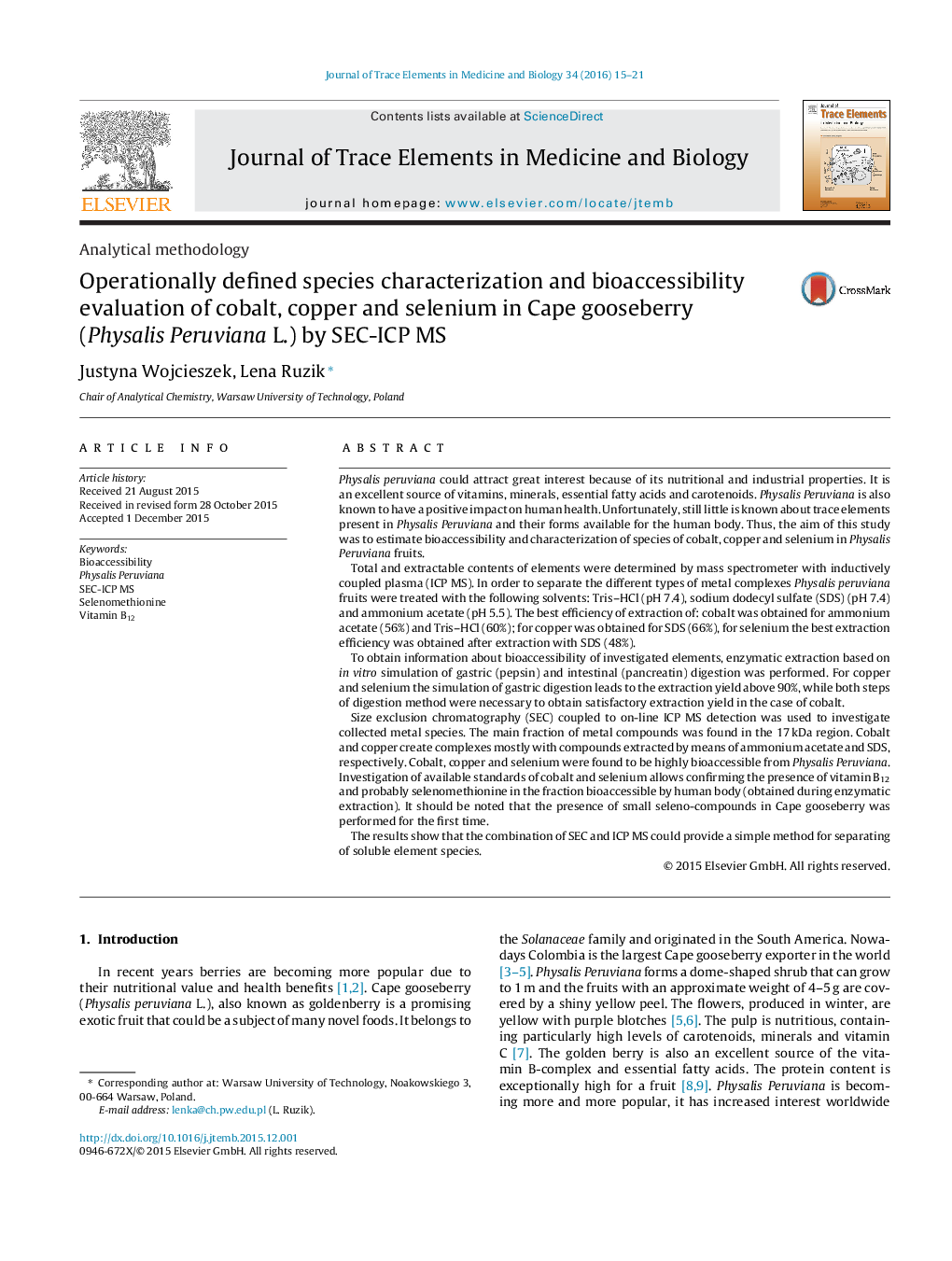| Article ID | Journal | Published Year | Pages | File Type |
|---|---|---|---|---|
| 1227311 | Journal of Trace Elements in Medicine and Biology | 2016 | 7 Pages |
Physalis peruviana could attract great interest because of its nutritional and industrial properties. It is an excellent source of vitamins, minerals, essential fatty acids and carotenoids. Physalis Peruviana is also known to have a positive impact on human health. Unfortunately, still little is known about trace elements present in Physalis Peruviana and their forms available for the human body. Thus, the aim of this study was to estimate bioaccessibility and characterization of species of cobalt, copper and selenium in Physalis Peruviana fruits.Total and extractable contents of elements were determined by mass spectrometer with inductively coupled plasma (ICP MS). In order to separate the different types of metal complexes Physalis peruviana fruits were treated with the following solvents: Tris–HCl (pH 7.4), sodium dodecyl sulfate (SDS) (pH 7.4) and ammonium acetate (pH 5.5). The best efficiency of extraction of: cobalt was obtained for ammonium acetate (56%) and Tris–HCl (60%); for copper was obtained for SDS (66%), for selenium the best extraction efficiency was obtained after extraction with SDS (48%).To obtain information about bioaccessibility of investigated elements, enzymatic extraction based on in vitro simulation of gastric (pepsin) and intestinal (pancreatin) digestion was performed. For copper and selenium the simulation of gastric digestion leads to the extraction yield above 90%, while both steps of digestion method were necessary to obtain satisfactory extraction yield in the case of cobalt.Size exclusion chromatography (SEC) coupled to on-line ICP MS detection was used to investigate collected metal species. The main fraction of metal compounds was found in the 17 kDa region. Cobalt and copper create complexes mostly with compounds extracted by means of ammonium acetate and SDS, respectively. Cobalt, copper and selenium were found to be highly bioaccessible from Physalis Peruviana. Investigation of available standards of cobalt and selenium allows confirming the presence of vitamin B12 and probably selenomethionine in the fraction bioaccessible by human body (obtained during enzymatic extraction). It should be noted that the presence of small seleno-compounds in Cape gooseberry was performed for the first time.The results show that the combination of SEC and ICP MS could provide a simple method for separating of soluble element species.
